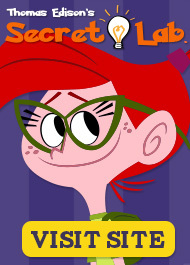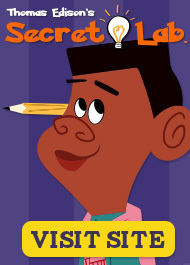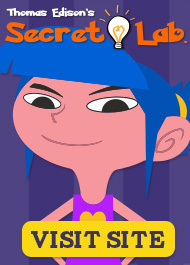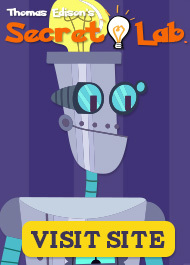Harry T. Roman's Blog, page 18
March 21, 2016
Intel Edison Awards
Intel has launched its new Intel® Edison multi-function module designed to help entrepreneurs and builders quickly prototype new products. Recently, both Intel and the Edison Innovation Foundation selected three development efforts they felt epitomized Edisonian creativity in the application of the module. The awardees mentioned below received “Tommy “Awards as shown here, named in honor of the great inventor, Thomas Edison.


The First Place Winner of the awards ceremony was Shubham Banerjee for work in using the microprocessor to build his Braille Printer called “Braigo”

Runner up winners included Ken Krieger as the “Brain” for Coordinating his Ebola Crisis Treatment Camp

Thud Rumble – Tech Savy DJs using Intel Edison as part of their Turntables and Audio Equipment
Congratulations to the awardees! All you other makers and inventors out there … try the Intel Edison module.
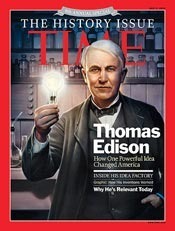 Thomas Edison said, “If we all did the things we are really capable of doing, we would literally astound ourselves …”
Thomas Edison said, “If we all did the things we are really capable of doing, we would literally astound ourselves …”March 7, 2016
Thomas Edison Salutes Female Engineering Students [FemGineers]
This is about young women in engineering, a delightful story of student teams competing every year in the National Engineers Week Future City Design Challenge. In 2008, with just 7 young ladies, the FemGineers magic started at Heritage Middle School in Livingston, NJ. Today 65-70 young ladies participate in this activity … after school I might add. Even young ladies who have gone on to high school come back to mentor their little sisters. Some of the original founding members of this group have gone on to engineering colleges.
As each class year works creatively on their design challenge, they do so mindful of those that came before and the spirit of excellence they project-for around the room is a large collection of awards attesting to what those who came before have accomplished. These young ladies have also competed in the Edison Innovation Foundation’s annual Thomas Edison Invention Challenge–another national design experience … and they have trophies to prove their creativity there as well.
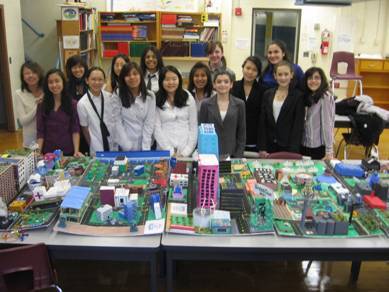
Listen to what Kenny Zushma their inspirational technology education teacher has to say about his charges.
“It is about more than just painting it pink. To truly excite females at a young age in the STEM fields, two items must be present. First is social fit. Girls need to feel a sense of community and belonging in a group. They do not want to be perceived as different. By having this group in place, they are assured that they are with like-minded young ladies who share the same interests. Second, they need to feel a sense of meaning when designing. By this, I mean they don’t want to design for the sake of competition, nor do they want to destructively test their designs. They want to design and build to improve life. Regardless of if it is on a global or local scale, they want to add to the community.”
We hear a great deal about STEM education and students using head and hands to design new things. I cannot think of a better example of this educational paradigm. Alongside this, Kenny gives his ladies a healthy dose of Thomas Edison and how his work at the nearby legendary Edison West Orange, NJ labs, [now officially known as the Thomas Edison National Historical Park] dovetails so well with the invention process. At West Orange, Edison put in place an invention process that encompasses the entire STEM movement-it is the taproot of STEM thinking and implementation-head and hands to the highest order. The FemGineers all benefit greatly by studying Edison, and carry that work ethic with them. Old Tom would be very proud!
 Thomas Edison said, “I find out what the world needs. Then I go ahead and try to invent it.”
Thomas Edison said, “I find out what the world needs. Then I go ahead and try to invent it.”Time® is a registered trademark of Time Inc.
February 15, 2016
Thomas Edison, Inventor & Humanitarian
Inventors are humanitarians-beneficially affecting society years into the future, creating the most precious gifts of all … jobs. Inventor-humanitarians create wealth, improving the standards of living. Case in point-Thomas Edison.
His exploits and value to the American economy and society are legendary-the man who gave us motion pictures, the phonograph, the light bulb and electric power industry, and vastly improved telephones and telegraphs. He helped put us in touch with each other. His establishment of commercial R&D labs that all Fortune 500 companies use today gave birth to an endless march of new products, for they are cradles of continuous innovation. He is the man most associated with technology based progress. Many years after the creation of these products his accomplishments are still responsible for one-tenth of our gross national product today, as well as about one-fourth of all the jobs on the planet. Creating jobs is an important aspect of one’s commitment to technological prosperity. And this outcome leads to widespread humanitarian benefits. The creative work of inventive men like Edison inspires generations of men and women to change the world for the better, which in turn generates wave after wave of humanitarian benefits.
“My desire is to do everything within my power to free people from drudgery and create the largest measure of happiness and prosperity.” -Thomas Edison

In 1996, Life Magazine proclaimed Thomas Edison the “Man of the Millennium’ … not the decade or century, but the millennium-1,000 years-a very bold statement, not spoken lightly! Recently, Time magazine lavishly praised his relevance and worldwide accomplishments. Today, our young ones are studying him with great passion, for what he did at his amazing West Orange Laboratories 130 years ago forms the very basis of what is known as the modern educational paradigm of STEM/STEAM; and like Edison, this program promises to change the fabric of education worldwide—making school ever more meaningful in the eyes of tomorrow’s decision-making citizens. Companies are clamoring for more STEM/STEAM graduates-a wonderful vindication of the humanitarian aspect of inventors in society. This is the powerful message for peace through prosperity, linking technological progress and society’s well-being, something Edison felt viscerally.
Let us also examine the classic philanthropic virtues of Edison:
Worked during WWI with the US Navy to reduce the impacts of the German U-boat scourge
Loaned free of charge his patents to Marconi to begin the development of radio telegraphy/wireless and later radio
Allowed the free use of his fluoroscope patent(s) for medical use
Promoted the use of solar energy [as early as 1910] as a new energy resource
“I’d put my money on the sun and solar energy. What a source of power! I hope we don’t have to wait until oil and coal run out before we tackle that. I wish I had more years left.” -Thomas Edison
Biomass farming to develop plant species for making artificial rubber
Use of natural materials in his inventions as much as possible
Development of low cost concrete houses to address housing shortages.
These humanitarian aspects of Edison continued in his family:
Wife Mina, gave great service to educational, civic and social concerns in her home county
Son Charles, governor of NJ, Secretary of the Navy, patron of the arts
Son Theodore, ardent environmentalist- like his mother Mina, a leading protector of riparian lands in Florida and Georgia
The Edison family gave freely and generously of themselves to the country.
After Thomas Edison’s death, his family gave his invention factory and their Glenmont home to the American people, to celebrate Dad’s work and as a classroom for future entrepreneurs. Humanitarian principles ran deep in the Edison family.
 Thomas Edison said … “My main purpose in life is to make enough money to create ever more inventions … The dove is my emblem … I want to save and advance human life, not destroy it … I am proud of the fact that I have never invented weapons to kill …“
Thomas Edison said … “My main purpose in life is to make enough money to create ever more inventions … The dove is my emblem … I want to save and advance human life, not destroy it … I am proud of the fact that I have never invented weapons to kill …“Time ® is a registered trademark of Time Inc.
January 25, 2016
Solar-Powered Mobile Classrooms
About 60 years ago, library vans brought the joy of learning and reading to semi-rural / rural areas of our great nation. The operative slogan then was, “Be all you can be-read”. Now in the digital age the need to maintain a grip on life-long learning is even more crucial to realize one’s potential, for we live in an unforgiving global economy.
Many of us living in a developed country merely need to access a hand-held device to keep abreast of what is happening. For African students living in remote, far off-the-grid locations, learning about computers and digital technology is virtually impossible. But what if the digital world were brought to them?

That’s the idea behind the DigiTruck project, a fledgling initiative, rolling out in 2016, that hopes to deploy a fleet of mobile, solar-powered digital classrooms that can travel self-sufficiently to rural African communities. A standard 40-foot shipping container is the new school house in rural areas-fitted with solar panels and a power management system designed for extended off-the-grid use. The container can be transported via standard tractor-trailer trucks.

Inside the mobile classroom, are workstations stocked with refurbished computer equipment, including laptops, routers, a large LED display screen and a printer. The classroom can accommodate up to 18 students and run off solar energy and rechargeable battery reserves for days at a time.
The DigiTruck can also be used as a mobile health center or training space, depending on what’s needed.
 “I have more respect for the fellow with a single idea who gets there than for the fellow with a thousand ideas who does nothing.”
“I have more respect for the fellow with a single idea who gets there than for the fellow with a thousand ideas who does nothing.”Time® is a registered trademark of Time Inc.
January 11, 2016
Edison–Everything Old is New Again
Think of graphite, perhaps in a pencil point, that allows you to write on paper. Now further engage your imagination to create a mental image of one-single layer of graphite-called graphene-the atoms of which are arranged in a honeycomb (hexagonal) lattice. First successfully isolated in 2003, graphene has many potential uses, and no doubt many more as it’s cost to manufacture drops.
A team of researchers from South Korea, Columbia’s Fu Foundation School of Engineering and Applied Science, Stanford University and University of Illinois at Urbana-Champaign have combined their talents to create the world’s thinnest light bulb (see photo below)-based on a graphene filament.

According to Yun Daniel Park, professor of physics and astronomy at Seoul National University, this light bulb work takes a page from Edison’s playbook. “Edison originally used carbon as a filament for his light bulb, and here we are going back to the same element, but using it in its pure form—graphene—and at its ultimate size limit—one atom thick.”
Another important aspect of this team’s work could be the ability to generate light on the surface of a chip, possibly leading to fully integrated photonic circuits that would, in theory, use light to carry information. Optical computing is considered the next bold step in increasing computation power and versatility.
Researchers at Manchester University in England are using graphene to radically extend LED-based bulbs. Coating the LEDs with graphene could make them up to 10 percent more efficient than traditional LED lights (better heat dissipation). It’s expected to be priced competitively to current LED models when it goes on sale later this year.
Tom … have you been listening to all this? Everything old (1879 or so) is new again … and better! See some of Edison’s original carbonized thread filament light bulbs in photo below.

Editor’s Note
Something to ponder about carbon-which can come in different forms (allotropes). Allotropes are different structural modifications of an element. Graphite/graphene and diamonds are common but different forms of carbon; and more new forms are still being discovered and researched. Graphene is the strongest material ever recorded, 300+ times stronger than the best structural steels; and 40+times stronger than diamonds.
 Thomas Edison said, “If we all did the things we are really capable of doing, we would literally astound ourselves …”
Thomas Edison said, “If we all did the things we are really capable of doing, we would literally astound ourselves …”Time ® is a registered trademark of Time Inc.
November 30, 2015
Edison & Einstein: Disruptors Inc.
They are the original, and most well-known, disruptors … Disruptors, Inc. TIME Magazine featured both men with special issues over the years to honor their spirit of innovation. Here are two.
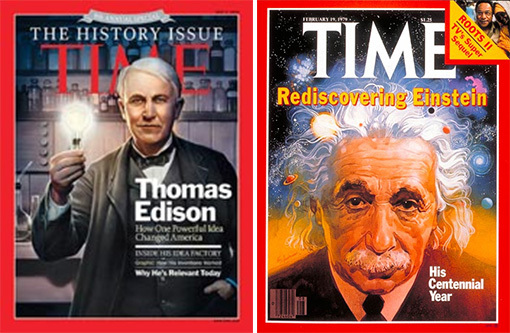
Time® is a registered trademark of Time Inc.
Edison disrupted the 1880s technology of illumination, changing it from the use of whale oil, kerosene, candles and manufactured gas to electric lighting-completely upsetting the traditional business model. He also introduced electricity in commercial applications such as factories, stores, and manufacturing. His electric light bulb/power station concept is over 135- years old. He also went on to develop the phonograph and motion pictures. His application of commercial R&D labs completely disrupted the then popular model of the lone-wolf basement/garage inventor-and gave us the team-based new product development model we refer to as technology driven progress.
Einstein disrupted the basis of late 19th century physics to give us radical new perspectives about our world and universe. His creative work yielded the theory of general relatively [which is now celebrating its 100-year anniversary], new ways to understand gravity as a warping of space-time, the conversion of mass to energy [atomic power], and the foundations for solid state electronics. Throughout his life, Einstein attempted to continuously disrupt physics by boiling down the great laws to a just a few powerful concepts.
Interestingly, both men had some trouble with school and the rigid teaching protocols of the day; both having their future potential vastly underestimated by their teachers. Edison and Einstein were operating in the realm of both content knowledge and how to use it (process)–different from what traditional schools valued … testing for content knowledge.
Edison & Einstein are totally consistent with the STEM educational paradigm now sweeping the nation- the inter-mixing of content and process; the championing of creativity and innovation. It is all about problem-solving, asking questions and following through.
Be like Edison & Einstein. Change the world! Check them out at:
www.thomasedison.org
www.facebook.com/thomasedison
www.edisonmuckers.org
www.facebook.com/EdisonMuckers
www.einstein.biz/
www.facebook.com/AlbertEinstein/
“If we all did the things we are really capable of doing, we would literally astound ourselves….” [Thomas Edison]
November 16, 2015
IceCube–A Giant Neutrino Observatory Built in the Tradition of Thomas Edison
Neutrino (Def): An elementary particle which holds no electrical charge, travels at nearly the speed of light, and passes through ordinary matter with virtually no interaction.
Edison would applaud the innovative efforts that went into the conception and construction of the IceCube Neutrino Observatory, essentially a giant neutrino detector to help us better understand the universe and its awesome operations.
Deep below the South Pole, carved into a cubic mile of ancient ice, is IceCube’s inner workings. Here scientists detect and learn about the universe’s dramatic events. The photos below show the surface and sub-surface arrangement of this massive and important lab-a facility that took 25 years to conceive and build.

The surface lab of IceCube, exposed to the inhospitable weather conditions there.

The deep sub-surface of IceCube with its many sensors. Notice the Eiffel Tower to scale.
Here is the cool magic behind IceCube. As you read this, “zillions” of neutrinos (probably created within the nuclear process of the sun) are passing harmlessly right through you and Earth. Neutrinos are also being created in abundance from other processes deep in the universe like supernovas, black holes, pulsars and gamma-ray bursts. From these neutrinos we learn about the birth and death of stars and the origins of the universe.
Studying neutrinos is difficult. They’re tough to detect (ghost particle) since they interact so weakly with other particles. In IceCube, as neutrinos pass through the ice, they can interact and produce charged particles, and these charged particles traveling through the ice give off light. Some have referred to IceCube as a telescope for neutrinos underground.
Edison did some interesting scientific work back in the 1875-1883 period by creating electrons in early light bulbs and applying them in what has come to be known as the world’s first electronic patent. About 25 years later, this led to vacuum tubes, thus giving birth to radio, television, and eventually solid-state transistors (Bell Labs). Electrons and their existence were not formally confirmed by scientists until the late 1890s.
Editor’s Deep Dive
http://www.pbs.org/newshour/rundown/what-is-a-neutrino-and-why-should-anyone-but-a-particle-physicist-care/
http://phys.org/news/2013-11-world-largest-particle-detector-icecube.html
http://www.nature.com/scientificamerican/journal/v313/n4/full/scientificamerican1015-58.html?WT.ec_id=SCIENTIFICAMERICAN-201510&spMailingID=49666360&spUserID=ODkwMTM2NjQyNAS2&spJobID=764160001&spReportId=NzY0MTYwMDAxS0
 Thomas Edison said, “I find out what the world needs. Then I go ahead and try to invent it.”
Thomas Edison said, “I find out what the world needs. Then I go ahead and try to invent it.”Time® is a registered trademark of Time Inc.
November 2, 2015
Thomas Edison and the Vagabonds [not a rock group]
The Idea for annual camping trips was born in 1914 when Henry Ford and the great environmentalist John Burroughs took a road trip to visit Thomas Edison at his Ft. Myers, Florida home. Between 1916 and 1924, Henry Ford, Thomas Edison, Harvey Firestone, and John Burroughs, embarked on a series of camping trips. Calling themselves the Vagabonds or Gypsies, they camped in style with big tents, servants, formal dining tableware, all transported by a caravan of automobiles; and a small truck with a refrigerator serving as camp kitchen.

Thomas Edison, John Burroughs, Henry Ford and Harvey Firestone
Sometimes the wives went along. Photos and movies often documented the famous outings … maybe an early form of reality show?
Check out these great photos at:
https://www.flickr.com/photos/thehenryford/sets/72157628233721391/
Check out these great short movies at:
https://www.youtube.com/watch?v=S1qXzrwNoTo
https://www.youtube.com/watch?v=C0zKDIs_bWs
The vagabonds toured Pennsylvania, West Virginia, Tennessee, Maryland, Virginia, North Carolina, California, New York, Michigan, Massachusetts and Vermont. These camping activities were often covered by local and national news outlets. The hardy campers would engage in tree-chopping contests, hunting, racing, horseback riding, talking and entertaining onlookers, “off-road” motoring-whatever caught their fancy-or maybe just relaxing in canvas chairs; or taking a snooze while stretched out on a blanket [Tom’s famous activity].

The Vagabonds at play–Henry Ford as the eccentric sheriff to a smiling Edison
Each would have an assigned role to play on the excursion, with Edison tending to the electricity and battery needs, Firestone ensuring the cars were well equipped and stocked with food, Ford scoping out possible camp sites, and the elder Burroughs playing the role of wildlife resource, bird caller, and hiking instructor.
Imagine the conversations around the campfire!
John Burroughs died in 1921, but the vagabonds picked up a new member, President Harding who went along when his schedule permitted. Others sometimes joined in like Luther Burbank, George Eastman, and President Coolidge. By 1924, the distractions of the public eye became too much for the Vagabonds and the group ended its annual camping pilgrimage.
Editor’s note:
These camping trips may have helped inspire the use of cars for vacations and out-doors activities [perhaps later even inspiring famous 1950s slogans like “See the USA in your Chevrolet” and “Happy Motoring”].
 “To invent, you need a good imagination and a pile of junk.”
“To invent, you need a good imagination and a pile of junk.”Time ® is a registered trademark of Time Inc.
October 6, 2015
Team Edison Shows Problem Solving in Action!
Thomas Edison had a lab team (i.e. “R+D”), people who could latch onto a problem, no matter how complex or difficult, and solve it. This behavior gave birth to Edison’s highly prized descriptor, “stick-to-it-ness”.
Kids, students, and budding young inventors can get a taste of what it is like to be Team Edison. Tune on to the new action comedy series–Thomas Edison’s Secret Lab–created by Genius Brands International.
Techno-savvy Team Edison discovers a hidden secret lab, built and stocked by none other than Thomas Edison at his former lab site in West Orange, NJ. See what these young talented minds [and a likable robot, Von Bolt] do with the resources of this lab. Old Tom Edison is there too, in holographic form, to help out and give advice.
There’s Angie, Nicky, Kent, Chang and Von Bolt the robot, to teach STEM principles to young viewers. Entertainment and education in every video … be there with the young ones! See the kids in action–now playing on NETFLIX, THE KID GENIUS channel on XFINITY, and on select PUBLIC TELEVISION stations [check their website for details]. Enjoy!
Tween Muckers Shows Problem Solving in Action!
Thomas Edison had a lab team (i.e. “R+D”), people who could latch onto a problem, no matter how complex or difficult, and solve it. This behavior gave birth to Edison’s highly prized descriptor, “stick-to-it-ness”.
Kids, students, and budding young inventors can get a taste of what it is like to be Team Edison. Tune on to the new action comedy series–Thomas Edison’s Secret Lab–created by Genius Brands International.
Techno-savvy tweens discover a hidden secret lab, built and stocked by none other than Thomas Edison at his former lab site in West Orange, NJ. See what these young talented minds [and a likable robot, Von Bolt] do with the resources of this lab. Old Tom Edison is there too, in holographic form, to help out and give advice.
There’s Angie, Nicky, Kent, Chang and Von Bolt the robot, to teach STEM principles to young viewers. Entertainment and education in every video … be there with the young ones! See the kids in action–now playing on NETFLIX, THE KID GENIUS channel on XFINITY, and on select PUBLIC TELEVISION stations [check their website for details]. Enjoy!
Harry T. Roman's Blog
- Harry T. Roman's profile
- 2 followers



